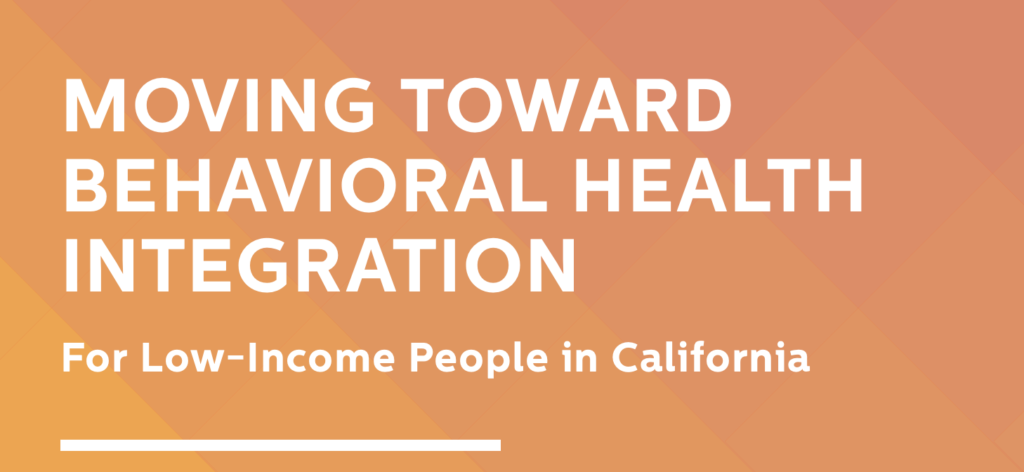Well Being Trust released “Moving Toward Behavioral Health Integration for Low-Income People in California” to highlight that integrating physical and mental health care will be critical to low-income people navigating a fragmented system of care. Read the paper to learn more about:
- behavioral health issues and delivery systems in California
- behavioral health integration proposals under consideration in California, and
- the questions policymakers will face in integrating mental health and substance use disorder services in Medi-Cal.
Behavioral health conditions, which include both mental health conditions and substance use disorder, are common: nearly one in five adults in the U.S. reported having experienced mental illness in 2017-2018. Greater integration of physical and behavioral health services, which have historically been fragmented, may be one way to improve outcomes. State Medicaid programs have been a major focus of integration efforts. More than half of states who use managed care are integrating at least some Medicaid mental health services with their physical managed care programs.
Next year, policymakers and stakeholders will decide whether and how to move forward with a new, integrated vision for a stronger Medi-Cal delivery system centered on beneficiaries’ health and social needs, called CalAIM. Increasing rates of poverty and loss of job-based health coverage will make Medi-Cal an even more important source of physical and behavioral health care coverage than it was pre-COVID. Moving forward with CalAIM could be part of a broader effort to strengthen California’s safety net during and beyond the pandemic. But the pandemic is also driving state spending increases and revenue shortfalls in California, while at the same time the pandemic is increasing mental health challenges facing people in California and across the country.
California has made incremental and temporary changes to expand access to behavioral health services during the pandemic. Some of these may lead to longer term policy changes, but the key challenge of significant fragmentation and overcoming delivery system silos will endure. In 2021, California will face the question of whether to take up the task of putting the administrative, clinical and financial pieces of the Medi-Cal behavioral health puzzle together to integrate services. This has the potential to lead to better outcomes and to make it easier for people to navigate state and county systems to access the care they need.






